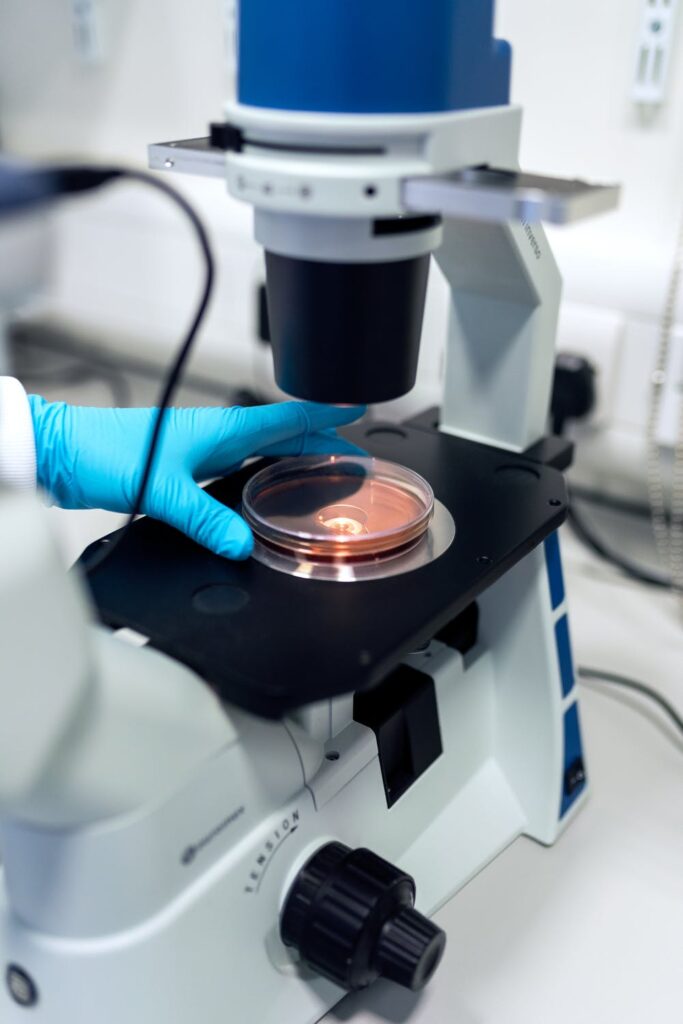eDNA Testing
What is Environmental DNA?
All organisms contain DNA. It is what defines every organism on the planet. As any organism moves through its environment it leaves behind minute traces of itself. Many of these traces contain DNA. That DNA can be found and used to identify and even track the movements of target organisms.
What Are the Applications of Environmental DNA ( eDNA ) Testing?
Surveillance of Invasive Species
Environmental DNA technology can help identify and track invasive species in an aquatic system through single project presence/absence studies, long-term surveillance of areas threatened by invasion, and the determination of the spatial extent of a species range (delimitation studies).
Traditional surveillance tools such as nets or electrofishing have difficulty detecting species in low abundance, prohibiting early detection. Rather than increasing the sampling effort, we use a more specific technology, enabling the early detection and rapid management of invasive species.
Eradication Assessment
Environmental DNA technology detects the presence or absence of species, allowing eradication efforts to be assessed accurately, quickly, and cost-effectively.
Identification and Monitoring of Endangered Species
By using a tool that relies on environmental cues rather than the sighting of a specimen, eDNA technology provides a non- invasive, non-disruptive method for demonstrating the presence or absence of an endangered species. This technique can be used to assess the efficacy of reintroduction programs or used in environmental impact assessments.
Biodiversity Monitoring Following Barrier Construction/Removal
Environmental DNA surveillance can be used to track the effects on biodiversity management techniques such as barrier removal or construction. By determining a baseline of species present, samples can be taken over time to analyze the recolonization of different types of fish after barrier removal or fish ladder construction. Conversely, the absence of fish after the construction of a barrier can also be noted and useful in testing the efficacy of barriers against invasive species.
Analysis of Biodiversity
Water samples can be used for the detection of multiple species, allowing for the species composition of an area to be determined within the confines of available markers.
Aquaculture or Ecosystem Health Monitoring
The presence of deadly pathogens can be detected in populations, enabling the rapid treatment and management of diseases. Viral hemorrhagic septicemia (VHS), for example, can be detected without the need of catching an infected specimen, allowing fisheries to be stocked only with healthy fish and enabling the rapid determination for containment need.
Pathway Surveillance: Organisms in Trade
Environmental DNA technology can be used to distinguish between desired bait species and undesired juvenile forms of invasive species that often find their way into the bait trade due to their similar appearances. Similarly, organisms in fish markets and pet shops can be monitored to prevent the sale and potential release of unwanted or harmful species. Where likely releases of organisms in trade have taken place, eDNA technology can be used to determine whether organisms have survived their release.
Environmental Impact and Risk Assessments
Environmental DNA technology can be used in environmental impact assessments to certify the presence/absence of a target species. Areas can be certified to be free of rare, threatened, or endangered species prior to construction or development. Power and water plants can easily test for the absence of zebra and quagga mussels before site determination.
How Can Scientific Methods Help?
Our eDNA surveillance services are individually tailored to address specific client needs. Our team works with environmental engineering firms, government agencies, municipalities, universities and other organizations to develop and apply eDNA collection and testing methods that are unique to the organism and ecosystem in question.
Our team can provide any or all of the steps in the eDNA method including:
* Project design
* Species-specific marker development and testing
Asian Carp
Silver carp (Hypophthalmichthys molitrix)
Bighead carp (Hypophthalmichthys nobilis)
Grass carp (Ctenopharyngodon idella)
Black carp (Mylopharyngodon piceus)
Common carp (Cyprinus carpio)
Snakehead (Channa argus)
Goldfish (Carassius auratus)
Lake Sturgeon (Acipenser fulvescens)
Zebra Mussels (Dreissena polymorpha)
Quagga Mussels (Dreissena rostriformis bugensis)
Chinook salmon (Oncorhynchus tshawytscha)
* Applications

Let's get in touch
This form is for business-related inquiries only. All other inquiries, including personnel-related requests, please contact Scientific Methods customer service at (574)277-4078. For sample analysis, please complete and send the Test Sample Submission Form to customer.service@scientificmethods.com. By filling out this information, you are adhering to our privacy policy.



